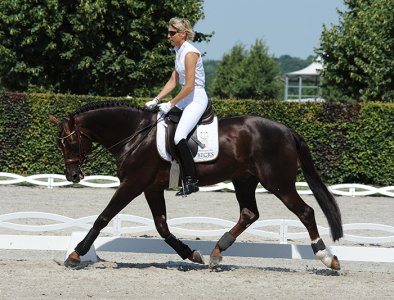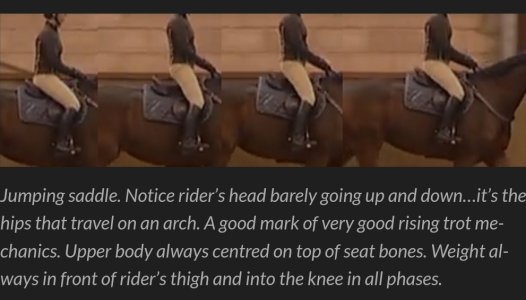Marigold4
Well-Known Member
I'm an older rider (early 60s) and the way I do rising trot seems to be different to the younger generation. I do what Heather Moffatt recommends, so upper body slightly inclined forward, and when I land my seatbones are slightly pointing back ready to receive the forward movement of the horse. When I watch younger riders, they rise very upright, back straight or even slightly leaning back, seatbones pointing down or even forward. When I have tried out the more upright rise, I feel it's much harder work and that I land more heavily. I probably need to practise it more. Which one is right - slightly inclined forward or very straight in the rise?



